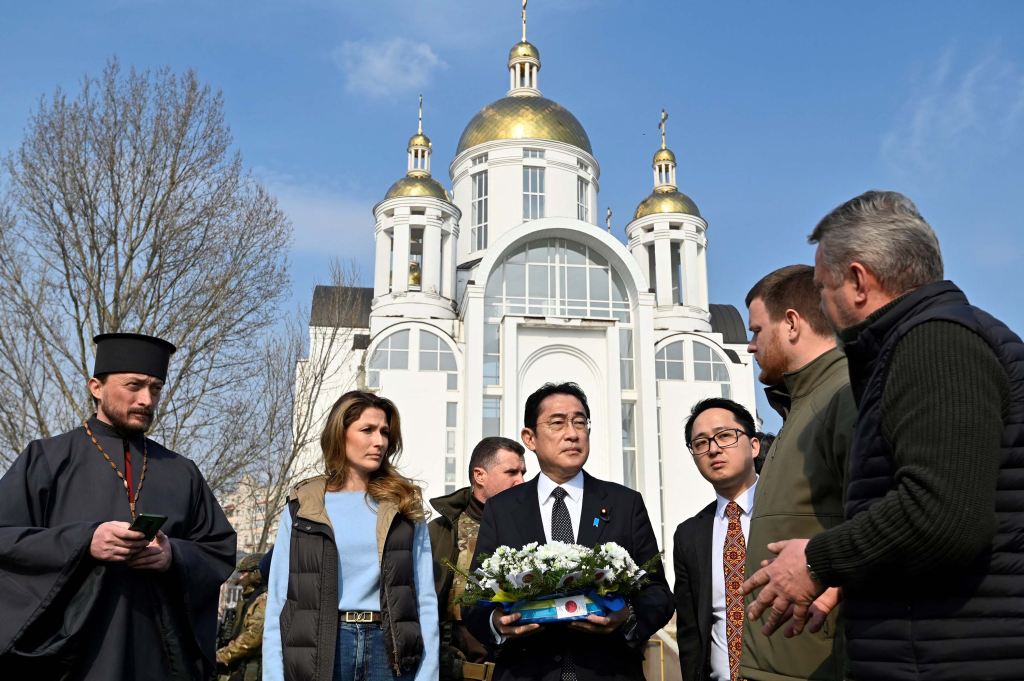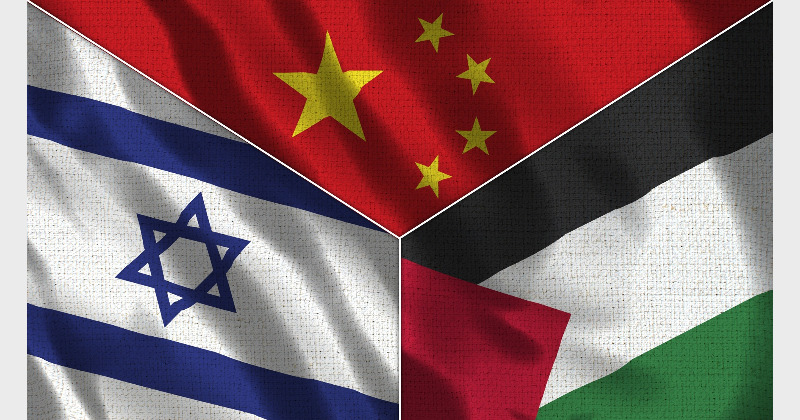Listen to the article
In December 2022, Japan unveiled its new National Security Strategy (NSS). Grounded in Japan’s three non-nuclear principles of not possessing, not producing, and not permitting the introduction of home-based nuclear weapons, the new NSS is both transformative in focusing on counterstrike capabilities and boosting defence spending and consistent with Japan’s deep committed to its post-WW2 Pacifist constitution, the rejection of military force as a legitimate tool of foreign policy, and support for a rules-based order.
In accordance with Japan’s constitution, counterstrikes have been conceived as a minimum necessary measure for self-defence and remain consistent with the Three New Conditions for Use of Force. These are: 1) when an armed attack against Japan occurs or when an armed attack against a foreign country that is in a close relationship with Japan occurs and as a result threatens Japan’s survival and poses a clear danger to people’s right to life, liberty and pursuit of happiness; 2) when there is no other appropriate means available to repel the attack and ensure Japan’s survival and protect its people; and 3) use of force limited to the minimum extent necessary.
The reasons for acquiring these capabilities are numerous. In the context of Russia’s invasion of Ukraine and challenges that China assertive policies presents to the regional order in the Indo-Pacific, this essay will analyse Japan’s economic realism and new NSS, highlighting the precarious balance Japan employs to secure its economic and national security.
The Ukraine-Russia war as a critical juncture
The invasion of Ukraine by Russia on 24 February 2022 was a critical moment for Japanese security thinking. Not only did it disrupt food and energy supply chains, but it demonstrated that authoritarian states and a Machiavellian, might-is-right approach to foreign policy threatens the international rules-based order that has been the foundation for Japan’s and the broader region’s peace, prosperity, and security in the post-WW2 period. For Prime Minister Kishida Fumio, it conveyed the stark reality that “Ukraine today could be East Asia tomorrow”.
Japan’s overarching concern is that China will repeat Russia’s aggression in one or more of the various geopolitical hotspots in the Indo-Pacific. Tokyo’s anxieties are not without reason.
China’s militarization since entering the World Trade Organization (WTO) in 2001 has continued unabated. By way of example, from 2000 to 2010, China’s known military spending increased by at least 10 percent annually. The most contemporary known military budget increase of seven percent for fiscal year 2022 surpassed USD 229 billion. Investments include its extensive anti-access/anti-denial system meant to circumvent the US’s comparative asymmetric naval advantages by lining the east coast of China with “carrier killers” and other offensive systems.
The military exercises conducted around Taiwan in August 2022 following Nancy Pelosi’s visit to the island – exercises that included naval and land assets such as the Chinese aircraft carriers the Liaoning and the Shandong and at least 75 amphibious assault ships, at least one Type 55 cruiser, and several Type 54 frigates – pose a serious risk to the sea lines of communication (SLOCs) that surround Taiwan and are critical arteries to transport import/exports as well as energy resources in and out of Japan.
The SLOCs in the South China Sea are also vulnerable to accidental or intentional disruption following the building and then militarization of artificial islands in the South China Sea by China.
The deepening Beijing-Moscow relationship following the invasion of Ukraine, including increased military coordination between Russia and China, and newer-model equipment and the implementation of large-scale military exercises in the Far East region has led Tokyo to similar conclusions to those of Michał Bogusz, Jakub Jakóbowski, and Witold Rodkiewicz in their report “The Beijing-Moscow axis: The foundations of an asymmetric alliance”.
For Tokyo, the Russian-Chinese quasi-alliance is a strategic convergence of Beijing’s and Moscow’s priorities to strengthen their strategic positions vis-à-vis the US.
By “simultaneous aggressive policies – Russia in Europe, and China in the Indo-Pacific”, they each seek to dilute Washington’s limited resources “to put an end to the dominant role of the United States and Western institutions on the international arena, and to create a favourable international environment for the survival of their authoritarian regimes”.
Kyiv’s willingness to defend itself against Russian aggression has garnered support from the US, the EU, Japan, South Korea, and Australia in terms of providing additional military and non-military resources to defend Ukraine. This is in addition to the diplomatic coordination that has occurred to pressure Moscow with financial and other sanctions.
Ukraine’s unexpected success in defending its territory from Russia’s invasion has planted into the minds of security planners in Tokyo the importance of investing in Japan’s security instead of just depending on its alliance partner, the US, to come to its aid in the case of a conflict involving North Korea, Taiwan, or the East China and South China Seas.
Simply, if Tokyo is not willing to defend itself, why should it expect the US to shed blood on its behalf?
Moreover, Tokyo has seen Ukraine’s absence from multilateral security, economic, and other frameworks as part of the explanation for Russia’s willingness to invade Ukraine.
As a result, Tokyo continues to deepen its alliance partnership with the US, to diversify its security partnerships through reciprocal access agreements (RAA) with the UK and Australia, and to expand its leadership and cooperation within the Quadrilateral Security Dialogue (Quad).
It has even formed new Quad minilateral cooperative partnerships with the US, Australia, and the Philippines.
Economic realism and Japan’s new National Security Strategy
Based on Japan’s increasingly severe regional environment, its 2022 NSS focuses extensively on enhancing economic security as a crucial component of its overall foreign policy strategy.
The NSS recognizes the increasing interdependence of economic and national security and the need for Japan to safeguard its economic interests amidst a rapidly evolving global landscape. This includes safeguarding supply chains and economic relations from weaponization and economic coercion.
The NSS also includes an emphasis of dealing with the most severe traditional security environment in the post-WW2 period. This includes weapons of mass destruction (WMD) proliferation on the Korean peninsula and in China, and grey zone and lawfare operations across the Taiwan Strait and in the East China and South China Seas.
Japan’s NSS emphasizes the importance of promoting economic resilience and diversity. With direct experience with the weaponization of economic relations by China such as a rare earth embargo in 2010 and anti-Japanese violence and vandalism against Japanese businesses based in China following the nationalization of the Senkaku Islands in 2012, Japan has recognized the vulnerability of overconcentration of its manufacturing footprint in China.
The COVID-19 pandemic and associated supply chain disruptions further cemented concerns that Japan’s economic security was at risk not only due to geopolitical tensions and non-tradition security challenges such as transnational diseases but also policy choices by China’s leaders such as the Dynamic Zero COVID-19 policies.
The strategy endeavours to enhance the nation’s economic strength by fostering innovation, diversifying supply chains, and promoting the growth of emerging sectors.
By reducing its dependence on any single industry or country, Japan seeks to minimize potential disruptions to its economy, ensuring stability and sustained growth.
This does not mean decoupling from China – it refers to selective diversification or de-risking that is driven by profitability, geo-politics, policy choices, and the realization that black swan events such as the COVID-19 pandemic can be highly disruptive to supply chains and economic security.
The strategy prioritizes the protection of critical infrastructure and technology. Japan is highly aware of the risks posed by cyber threats, intellectual property theft, and technological vulnerabilities.
To counter these challenges, the strategy advocates for increased investment in cybersecurity measures, the development of advanced technologies, and the establishment of robust mechanisms for protecting intellectual property.
By safeguarding its critical infrastructure and technological advancements, Japan aims to maintain its competitive edge and prevent unauthorized access to vital economic assets.
Another key aspect of Japan’s economic security policy is the promotion of international economic cooperation.
Recognizing that economic security cannot be achieved in isolation, the policy emphasizes the importance of collaborating with like-minded nations to address common challenges.
Japan actively seeks to strengthen economic partnerships, engage in free and fair-trade practices, and support multi-lateral frameworks such as the WTO, the Comprehensive and Progressive Agreement for Trans-Pacific Partnership (CPTPP), and the evolving Indo-Pacific Economic Framework (IPEF).
Through these efforts, Japan aims to foster a stable and predictable global economic environment that benefits all nations and is solidly built on transparent and enforced rules.
To achieve these objectives, Japan aims to work with like-minded countries. To illustrate, the 23 May 2023 G7 Leaders’ Statement on Economic Resilience and Economic Security, the G7 Hiroshima Leaders’ Communiqué, and the 27 May 2023 Press Statement on the Substantial Conclusion of IPEF Supply Chain Agreement Negotiations reflect Japan’s intention to instil resilience into supply chains and the region’s economy through a layered and diverse approach.
The strategy underscores the significance of economic security in the Indo-Pacific region broadly. Tokyo recognizes the region’s growing economic importance and the need to maintain stability and prosperity.
The strategy advocates for active engagement in regional economic initiatives such as the Free and Open Indo-Pacific (FOIP) vision and supports the development of infrastructure projects that enhance connectivity among nations.
By promoting economic integration and cooperation, Japan looks to the region’s overall economic security and strengthen its own position as a key player.
Part and parcel of Japan’s economic realism and its NSS is to help different regions in the Indo-Pacific to strengthen their strategic autonomy by deepening the degree of intra-regional and inter-regional integration.
By way of example, Tokyo has invested heavily in infrastructure and connectivity projects in Southeast Asia and South Asia.
In the case of the former, the East-West, Southern, and North-South infrastructure corridors in Southeast Asia are meant to deepen intra-ASEAN integration such that the partners trade more with each other than they do with China.
In the case of the latter, Japanese Overseas Development Aid (ODA) to India, the building of the Kolkata-Mumbai transport corridor and industrial manufacturing sites Northeast of New Delhi aim to enhance and deepen India’s economic integration and ability to serve as another production and transport site for the Japanese manufacturing sector.
Tokyo’s resilience logic is that these emerging centres of production will be in regions that are less affected by the geopolitical challenges that exist between Tokyo and Beijing.
At the same time, Tokyo believes that through ODA and Foreign Direct Investment (FDI) into the region, it can enhance each region’s strategic autonomy, making them more reliable partners when dealing with issues associated with China but also with Russia and North Korea.
Investing in deterrence and defence capabilities sits side by side with the NSS’ focus on economic security. Policy makers in Tokyo are acutely aware that North Korea’s accelerated production of a plethora of missile delivery systems, including short-, mid-, and long-range inter-continental ballistic missiles and technologies to evade anti-ballistic missile (ABM) systems, Chinese militarization and determined efforts to reunify with Taiwan, and deepening Russo-China alignment will require enhanced deterrence and defence capabilities.
To strengthen Japan’s enhanced deterrence and defence capabilities, Tokyo has made a commitment to double defence spending over five years.
Investments include comprehensive domain awareness technologies such as satellites, over the horizon radar systems, cybersecurity initiatives, and drone technologies that can be deployed in various environments to provide cheap but comprehensive situational awareness in light of the growing security challenges emerging from China’s rapid military expansion and North Korea’s WMD proliferation.
Simultaneously, it advocates for a strengthening of the US-Japan Alliance, maintaining and developing a free and open international order, and strengthening ties with like-minded countries and others.
Unsurprisingly for allies and friends of Japan, the NSS advocates for fundamentally reinforcing defence capabilities as the last guarantee of national security through acquisition of “counterstrike capabilities: capabilities which, in the case of missile attacks by an opponent, enable Japan to mount effective counterstrikes against the opponent to prevent further attacks while defending against incoming missiles by means of the missile defence network”.
In conclusion, Russia’s invasion of Ukraine has emphasized to Japan that war is a possibility and that authoritarian states such as Russia and China are willing to use force, the grey zone, and economic coercion to achieve their strategic objectives.
Notwithstanding this, as the third-largest economy and a country that has major trading relations with China, Japan’s 2022 National Security Policy places significant emphasis on economic security as a vital component of its foreign policy strategy.
Through the promotion of economic resilience, protecting critical infrastructure and technology, fostering international economic cooperation, prioritizing the Indo-Pacific region, and supporting defence capabilities, Japan aims to safeguard its economic interests and contribute to global stability.
These policies reflect Japan’s recognition of the interconnectedness between economic and national security and its commitment to proactive engagement in shaping the evolving global economic landscape.
Download the paper:





Leave a comment